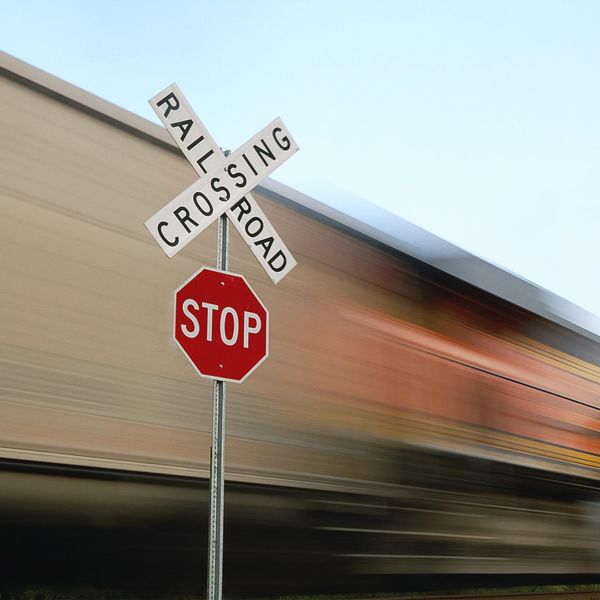Safety Alert: Pay Close Attention at Railroad Crossings

It’s been a dangerous and deadly summer for tractor trailers and trains. In June, a collision between a dump truck and an Amtrak train in Missouri sparked a derailment that caused four deaths and an estimated $4 billion in damages.
In July, train and semitruck collisions happened in Las Vegas, Louisiana, Oklahoma and Iowa, causing injuries and fatalities. And in August, an Amtrak train collided with a semi in Maryland, injuring the truck driver.
Trains are faster than many truck drivers think. You may not realize that trains actually take a very long time to stop. A train traveling at 55 mph needs a mile or more to stop. The nonprofit group Operation Lifesaver offers these tips to help professional drivers navigate railroad crossings safely.
1. Eliminate all distractions.
Turn off noisy radios and fans, and never use your smartphone.
2. Know the signs.
- A round, yellow sign with the letters “RXR” is an advanced warning of an upcoming crossing. When you see it, slow down, look, listen and get ready to stop.
- Pavement markings that say RXR warn of a crossing ahead, too. Always stop behind the white line while waiting for a train to pass. If there’s no white line, leave at least 15 feet between the front of your truck and the tracks.
- A white X posted near the crossing is a crossbuck. Yield at all crossbucks. Trains always have the right-of-way.
3. Always assume a train is coming.
Never think otherwise.
4. Red flashing lights at the tracks mean stop.
Don’t ignore them, and don’t drive around warning arms if they’re closed—it’s illegal and dangerous.
5. Look left and right twice for approaching trains before crossing.
Look around any obstructions located near the tracks. If you can’t see clearly, don’t attempt to cross.
6. Take extra caution at multiple tracks.
Two or more tracks can mean two or more trains are coming.
7. Know the law.
Trucks carrying hazardous materials must stop at all crossings unless an exempt sign is posted at the crossing.
8. Don’t get hung up on the tracks.
Look for low-ground clearance warnings. If you drive anything low to the ground (lowboy, bus, truck or trailer) you are at risk for getting hung up. If there is a limited amount of room or a lot of traffic, always make sure you have the space you need to completely clear the tracks before proceeding.
9. Once you start crossing, don’t hesitate.
If you’re stuck on the tracks, leave your cab immediately. Call the phone number on the blue and white Emergency Notification System sign at the tracks and give the operator the posted crossing identification number. If there is no blue-and-white sign, call 911.

